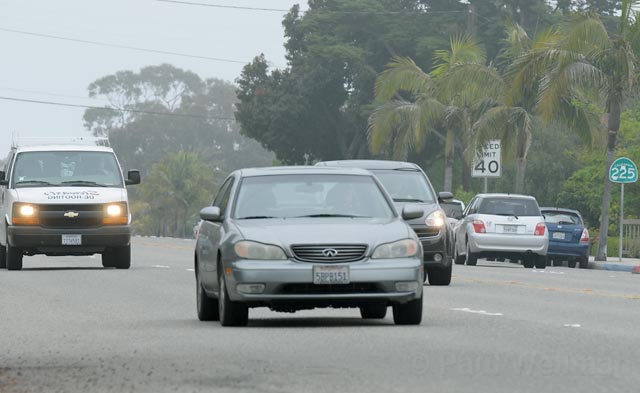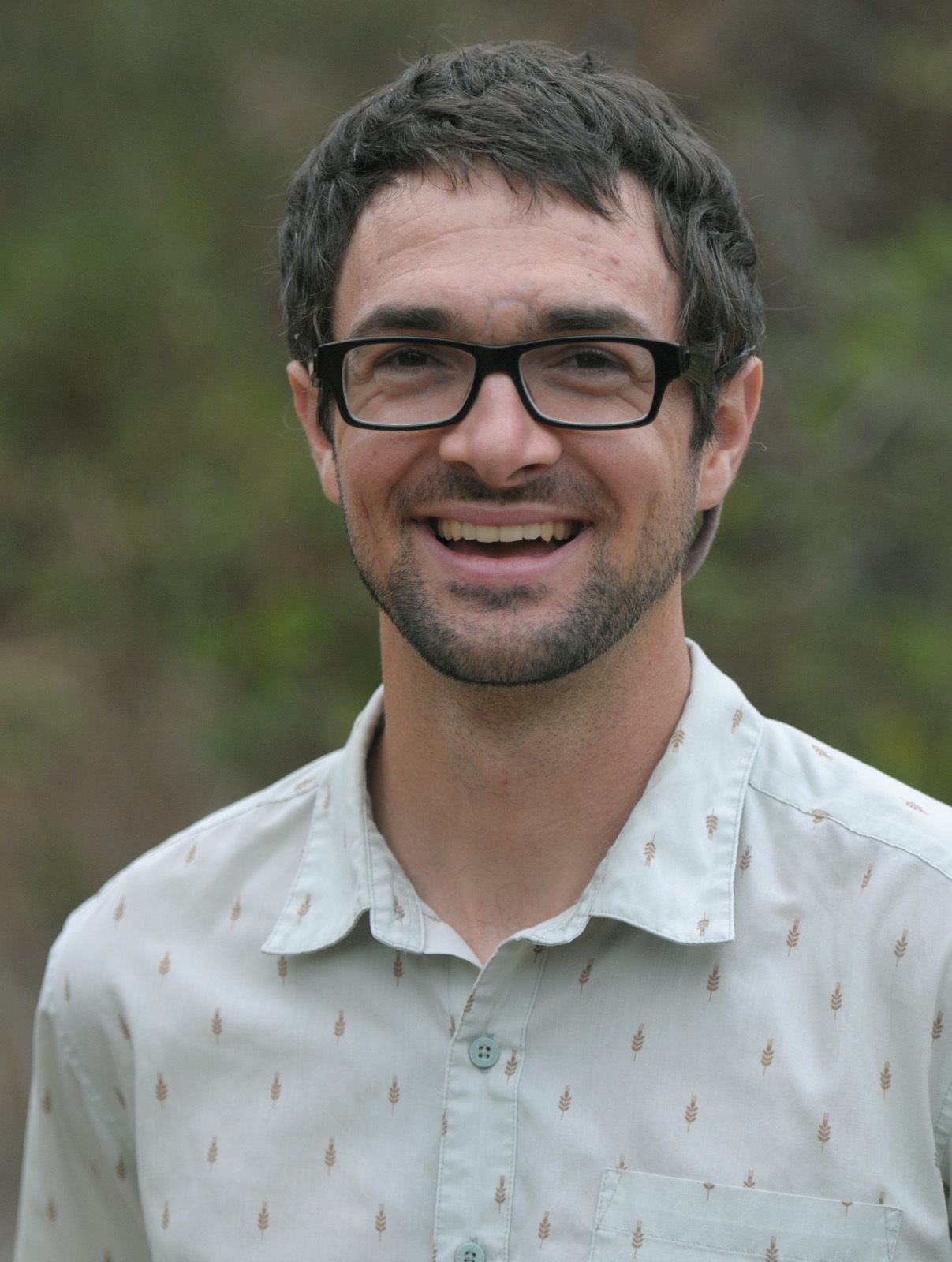Safety Beats Speed on Cliff Drive
No Cause for Alarm in Re-striping of Perilous Mile

City government has risen to the challenge and responded to the overwhelming support of Mesa residents for safety improvements in their main street, voting 7-0 last night to re-stripe Cliff Drive.
In an infamous one-mile stretch of Cliff drive, there are zero crosswalks, speeds often topping 50 miles per hour, and frequent rear-end collisions. Occasionally, and sadly, out-of-control vehicles have launched into private residences. (In one such case, a car crashed into a master bedroom.)

The proposed safety improvements are simple enough. They involve re-striping to create safer turn lanes, pedestrian crosswalks, and bike lanes, and to encourage slower speeds. No significant impacts to traffic flow are anticipated. The fire department has approved the concept for ease of emergency access. This attractive, and much needed improvement, becomes very timely since it will be done free of charge by Caltrans—if, and only if, it is approved in time for their planned road re-paving in June and July.
The issue got the ear and eyes of Caltrans staff thanks to a neighborhood group known as the Mesa Architects and assistance from Mayor Helene Schneider and Supervisor Janet Wolf. Shortly thereafter, the Mesa Architects put in hundreds of hours to propose a viable re-striping plan, present it to Mesa residents in a town hall forum, and subsequently to the City Council and their Transportation and Circulation Committee. After the town forum’s overwhelming support, the race was on for the Council’s blessing before the opportunity is paved and painted away.
What are the concerns? The ten public speakers at the Transportation and Circulation hearing on the issue all spoke in favor of the proposal. However, the blogosphere (and its anonymity-fueled hyperbole) has raised various objections. And after all, articulating the potential repercussions of a change in the public space is an important check-and-balance for local governance. I combed through the comments (some might call them “rants”) sections of three online news sources and reviewed their critiques. I outline the arguments and facts below for your information.
Upon review, there is not much controversy to be found. The public benefits of this safety improvement outweigh any private concerns, even if those were well-grounded. Certainly, in this case, the duty of public servants is to respond to the call of action for safety and make the most of this time-sensitive opportunity.
The “Traffic will come to a standstill” argument: As far as is visible there are no commercial zones (no business driveways) within the section of Cliff Drive being re-striped to three vehicle lanes. There is no “obstruction” proposed and the three-vehicular-lane striping is consistent with the usage rate of the roadway. The speed on this section will naturally reduce from 40-plus miles per hour to 35. With the much slower speeds (25 mph), stops, and circuitous routes on the side streets, neither San Miguel nor Fellowship could compete with Cliff for through traffic.
The “implied chaos” arguments: The section of proposed re-striping is above both SBCC entrances, which are both primarily served by Castillo. This section also has a use rate lower than the rest of Cliff; and low enough to easily qualify for three lanes instead of four. Additionally, much of the non-Mesa resident traffic flow to the commercial zone is fed from Las Positas or Carrillo Hill and would not be impacted by this project.
The “Let’s study the situation for another ten years” argument: Caltrans will not approve the re-striping unless it is consistent with data-driven roadway policy adhering to the Manual on Uniform Traffic Control Devices guidelines, which, upon initial review, it is. It is also unrealistic to reduce traffic speed arbitrarily on a four-lane state highway any way other than by this striping modification. The proposal at hand seems to provide natural visual cues to reduce speed, and legally reduce posted speed limits.
The “concerned about evacuation” argument: Who will take the blame? Who takes the blame currently for the injuries and deaths of out-of-control-drivers, rear-ended motorists, and struck pedestrians? The Fire Department has reviewed the proposal and has no objections. A retired fire captain spoke at the Mesa Town Hall forum and made clear that evacuation routes function best as one lane, and that the bike lanes would act as buffer space for stalled cars in an emergency.
(This story has been amended since its original posting to reflect the City Council’s unanimous vote in favor of re-striping.)



